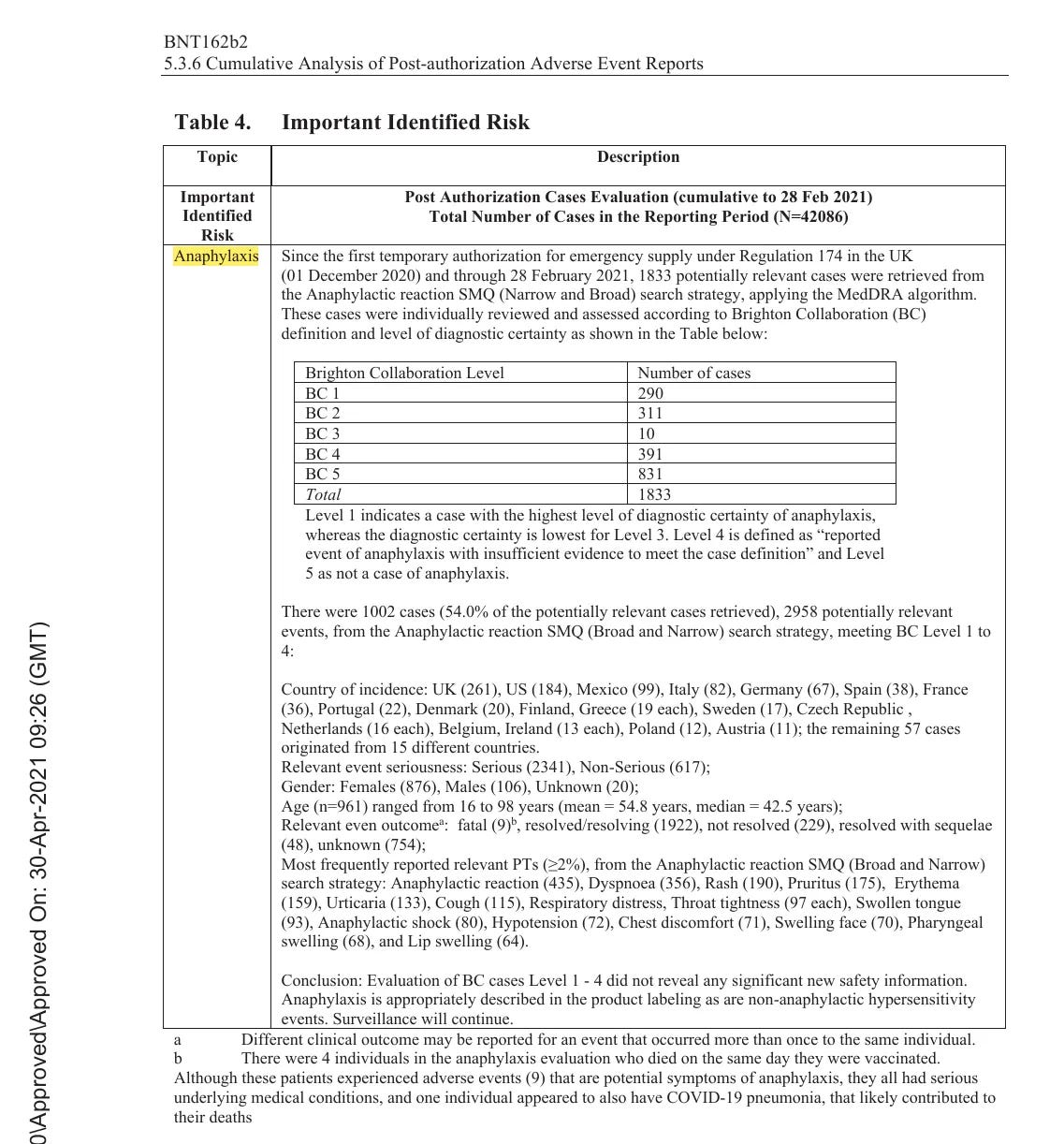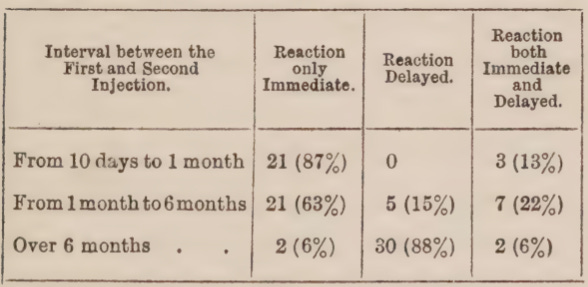Sasha Latypova on "the second shot," anaphylaxis, vaccination and scientific paradigm shifts.
With her permission, I'm cross-publishing a report Sasha Latypova published yesterday:
Sept. 3, 2024 - The second shot, or what do vaccinators and sewer rats have in common? Reviewing Charles Richet's work on anaphylaxis, awarded the Nobel Prize in 1913. (Sasha Latypova)
I think Sasha is making major contributions to a paradigm shift in the sciences of disease causality (both short-term, self-limiting, “communicable” or “infectious” disease and chronic disease) and immunology, as such shifts were articulated by Thomas Kuhns in his 1962 book The Structure of Scientific Revolutions.
And she’s doing it without institutional support; with limited, if any, collaborator support; and without academic scientific credentials.
The knowledge gained by Charles Richet, Nicolas Arthus, Milton Rosenau, John Anderson, Bela Schick and their colleagues in the last decades of the 19th century and first decades of the 20th century could have been used to promote human health, fertility and longevity.
Instead, the knowledge was manipulated, mischaracterized, suppressed and weaponized in the form of vaccination programs — intentional, methodical “anaphylactising” or sensitizing of humans and animals against a wide range of substances — to weaken and degrade human health, fertility and longevity.
The knowledge was used to cause those harms with plausible deniability.
I hope many people will grasp what Sasha is painstakingly uncovering and help her develop the new paradigm.
I think more people understanding this material will help bring worldwide vaccination programs to a close sooner, so that new generations of babies and children can be born and grow up without being intentionally poisoned; so that those already poisoned can at least stop getting more poisons put into their bodies; and to maybe help support healing for the vaccine-injured.
By Sasha Latypova
Remember this quote?
April 6, 2023 "The second shot almost did me in. As in I almost died." (Sage Hana, quoting Robert Malone, Jan. 13, 2022, How bad is my batch?)
The second shot, 21 days apart.
Why the second shot and why 21 days, exactly?
Let’s take a look.
The anaphylaxis research history.
Charles Richet (Wikipedia entry)
Charles Robert Richet (25 August 1850 – 4 December 1935) was a French physiologist at the Collège de France and immunology pioneer. In 1913, he won the Nobel Prize in Physiology or Medicine "in recognition of his work on anaphylaxis". Richet devoted many years to the study of paranormal and spiritualist phenomena, coining the term "ectoplasm". He believed in the inferiority of black people, was a proponent of eugenics, and presided over the French Eugenics Society towards the end of his life.
I would like to acknowledge that I knew not much about anaphylaxis other than it is a dangerous, life-threatening allergic reaction. I witnessed it in a local grocery store pharmacy that administered covid vaccines. A young apparently healthy man (in his 30s) dropped on the floor immediately after the injection and was lying there when I walked in. Everyone was behaving like it wasn’t a big deal. I wanted to be let off this planet.
While working on this article, I ran a quick CDC VAERS query. All vaccines for all time in VAERS (about 30 years) produced 12,200+ anaphylactic reactions and 2200+ shocks. Covid-19 vaccines produced 9,000+ anaphylactic reactions and 1000+ anaphylactic shocks.
mRNA injections are responsible for 11k of the total 12k reported anaphylactic reactions. However, that’s not the entire story of anaphylaxis.
Katherine Watt pointed me to Charles Richet’s Nobel Prize acceptance speech and to a couple of articles by this author (Northern Tracey).
I suggest you read them. The author was way ahead of all of us on this topic.
Katherine published on our email exchange at the time:
Aug. 26, 2024 - Intentional elusivity of definitions for virus and vaccine (Katherine Watt)
As I mentioned in my email exchange with Katherine, Richet’s own work clearly referred to the poison he made from tentacles of Actinaria (sea anemone) as the “virus of Actinaria.”
This confirmed one more time what we already knew: viruses are not some sort of natural “seeds” of disease, randomly flying around and jumping strangers.
They are poisons - either natural toxins excreted by plants, bacteria and animals, or poisons made by people like Richet and now CDC/pharma. They do not transmit by air or casual contact.
What becomes apparent from reviewing Richet’s 100+ year old research: the only thing you really need to worry about with respect to “viruses/poisons” is an injection of biologics (proteins) for the second time within the anaphylaxis window that starts typically after 20 days and lasting anywhere from months to years to the lifetime.
This can happen in nature from the second bite of an animal/insect carrying same biological toxin (a very low probability event nowadays), or from what is now forced by the government policy — from the needle wielded by a brainless money whore masquerading as a healthcare provider who is doing it for the 90th time in your or your child’s life “because science.”
The original biologics regulation law in 1902 was called the virus-toxin act. Early on, virus, toxin, antitoxin, serum and vaccine were used interchangeably, because the vaccinators knew what they were propagating in the labs and licensed establishments.
Biological poisons.
This led me to become intensely interested in Richet’s work. I found his book describing the work on anaphylaxis published in 1913. I am including several quotes [screenshots in original] from it, so you can read for yourself.
Richet alluded to vaccination being a failure from the first attempts, because, instead of producing expected immunity, it produced violent reactions or even death from minute (not considered dangerous) amounts of the toxin at the second exposure.
This happened in a random % of the population.
One example quoted anaphylaxis rates from injecting cattle with anthrax serum: approximately 10% became violently ill and many died.
The population who would react anaphylactically is a priori not distinguishable from others, because it is not known who is already sensitized to which biological substances.
1913, Anaphylaxis (Charles Richet):
“Thus, before my experiments with the virus of Actinaria were made, the only precise scientific idea relative to the sensitivity of animals to second injections was that sometimes some animals, instead of being immunised by first injections, were sensitised, and that sometimes animals whose blood contained large quantities of antitoxin succumbed to weak doses of toxin.”
This is still the case. There is no way to determine upfront who will be anaphylactically sensitized by an injection of a biologic (a protein).
The establishment healthcare denies this, proclaiming all vaccines “very safe.”
This is categorically not true, as becomes very apparent once you read Richet’s work related to injecting biological substances, even benign ones like milk or albumins (derived from wheat and other cereals).
Digesting a protein and injecting it directly into the blood stream are two entirely different things!
For example, it is safe to ingest snake venom for most people (provided no sores or abrasions in the mouth). I am not advising you try this, but sucking the venom out immediately post bite has been used as a bush medicine method. However, a snake bite delivering the same venom directly into the blood stream is an entirely different story.
You notice that Richet talks about the “second injection.”
This refers to the nature of anaphylaxis: the first interaction with an injected toxin may be not even noticed, be well tolerated or may be at worst mildly irritating. After a period of 2-3 weeks, the second exposure, however, may become very dangerous or fatal.
The second exposure in most of Richet’s experiments was by injection. However, with high enough sensitization by the first injection, the anaphylaxis could also result from environmental exposure or ingestion, depending on the degree of sensitization to the “allergen,” or “toxigen” as he termed it.
Do you understand peanut allergy, gluten allergy, soy allergy, etc. now? The things that didn’t exist before peanut oil, wheat albumins and other common food proteins became widely used in vaccines (and were proclaimed “generally safe” because it’s just food).
Importantly, Richet has demonstrated that anaphylaxis, anaphylactic shock and the variety of allergic reactions are all the same phenomenon, stemming from the same thing — a sensitizing exposure by proteins reaching the blood stream and bypassing normal digestion.
Richet provided principles of anaphylaxis in his book.
1913, Anaphylaxis, Richet:
Before dealing with the actual study of anaphylaxis I will mention the leading principles laid down in my papers of 1902.
A definite incubation period is necessary before anaphylaxis can be induced.
The anaphylactic state lasts many weeks.
There may be some similarity between anaphylaxis and immunity.
Anaphylaxis is to a certain extent specific; that is to say, the second injection should be of the same nature as the first.
The symptoms of anaphylaxis are immediate and intense, while the symptoms of primary intoxication are mild.
The anaphylactising substance is thermostable.
The anaphylactising toxin affects the central nervous system, and the essential phenomenon is a disorganisation of this system, with a considerable fall in the arterial blood pressure.
He also summarized findings from other researchers working on anaphylaxis at the time [1903-1910].
Notice especially points 8 and 10 — this describes anaphylaxis from “vaccination” and subsequent allergic reactions, even to non-proteins (crystalloids):
Richet, Anaphylaxis, 1913:
Several primary injections of normal serum into an animal develop an anaphylactic state. A toxin is not required, therefore, to create anaphylaxis. Anaphylaxis follows the injection of non-toxic and harmless substances; it is alone necessary that they be of an albuminoid nature (Arthus, 1903).
Accidents observed in man, following injections of serum, are anaphylactic phenomena (Pirquet and Schick, 1903).
A single injection of antitoxic serum leads to anaphylaxis on a second injection of normal serum, even if the second dose is extremely small (Theobald Smith, 1906), even as much as 0.00001 cc. (Rosenau and Anderson, 1906). Normal serum has exactly the same effects in first injections as antitoxic serum (Otto, 1906).
It is possible by intercurrent injections to prevent the appearance of the anaphylactic state (Otto, 1906). This is anti-anaphylaxis (Besredka and Steinhardt, 1906).
Animals inoculated with a known micro-organism are, in a definite and specific manner, anaphylactised to the toxin of this micro-organism.
The specificity of anaphylaxis is so precise that it is possible for the purposes of forensic medicine to determine, by the presence or absence of an anaphylactic reaction, the type of animal whose blood has been injected, although an extremely weak dose was administered (Rosenau and Anderson, 1907; Besredka, Uhlenhuth, 1909).
There is a form of anaphylaxis termed passive; that is to say, the blood of anaphylactised animals injected into normal animals produces anaphylaxis in them after a large number of injections (Nicolle, 1906), occasionally after a single primary injection (Ch. Richet, 1907).
Anaphylaxis may be produced by mixing in vitro the serum of anaphylactised animals with antigen, and injecting the mixture into normal animals (Ch. Richet, 1907).
There is a definite relationship between the production of the anaphylactising toxigen, the formation of precipitate, and the deviation of the complement (Friedberger, 1909).
Animals sensitised by anaphylactising substances are, to a certain extent, sensitised to all poisons, even crystalloids (Ch. Richet, 1910).
These are the main points established between 1902 and 1910. In the course of this work the actual experiments on which the definite theory of anaphylaxis is established will be pointed out. Although this is intended to be a summary of the work on anaphylaxis to date, I may be allowed to include a number of facts observed by myself and as yet unpublished.”
Richet found that the state of anaphylaxis sets in after a period of 2-3 weeks (it can vary), and depending on the initial toxin/protein, the sensitization state may last from weeks to years, and possibly be permanent.
At the time that he wrote the book, he mentioned that in people anaphylactic/allergenic state was observed up to 6 years, but it may be permanent.
Do you see now, why most vaccines are delivered in at least 2 doses, and they are separated by at least 21 days? They want to see if they induce severe anaphylaxis (i.e. life-threatening kind).
Here’s Pfizer’s “postmarketing experience” document, compiling adverse events as of Feb 2021 (first 2 months of vaccine rollout):
This table is not all cases of anaphylaxis, of course, but only the most severe form — the shock.
Anaphylaxis is all allergic reactions and autoimmune disease, but these things are very easy to deny as they take a while to manifest and are not immediately deadly. The industry has developed perfect gaslighting strategies: “genetic mutations,” “toxic food,” “stress,” “novel syndromes,” and even better — glorification of chronic illness via movies, advertising, non-profits and other economic activity feeding off vaccine-induced destruction of natural health.
In case of mRNA vaccines, they absolutely knew that they are killing people with anaphylaxis, but since that was the goal of the military weapon, the shots have not been removed and continue being pushed on the public.
Another interesting observation made by Richet is that white mice and some of the breeds of rats do not experience anaphylaxis. No wonder these animals are now the staple of pharmaceutical research!
While Richet himself seemed to be very much pro-vaccination, his main conclusions about anaphylaxis speak soundly against it.
It is impossible to design a safe vaccine, because it is impossible to predict anaphylactic reactions. Each individual is unique, a product of heredity and interactions with environment. Introduction of foreign, non-self proteins is an assault on this natural equilibrium and can only result in a disaster.
Richet, Anaphylaxis, 1913:
“Partly as the result of the food that has been taken, and partly as the result of multiple microbic infections which have attacked him and most often pass unnoticed, each individual is profoundly different from his neighbour, each has been prophylactised or anaphylactised to different degrees against different sub- stances.
Each is himself, and not another. Each has his idiosyncrasies, or, to put it better, his humoral individuality, as well as his psychological individuality, to differentiate him.
Previous impressions, so variable in different persons, render each person’s intelligence peculiar and personal. In the same way humoral impressions, if such an expression is permissible, induce in each individual a humoral personality just as characteristic of him as his intellectual personality.”
That vaccination in people induces anaphylaxis was known early on.
Richet, Anaphylaxis, 1913:
“Since the earliest use of sero-therapeutic injections definite phenomena have been observed to follow them, and naturally, as I was the first to use them, I was the first to describe them (Bull. de la Soc. de Biologie, 1891, 17th January): they included erythema, pruritus, more or less generalised urticaria, with slight fever and malaise. Later other observers saw and described them.
But until Pirquet and Schick in 1903 drew attention to it no relation had been observed between these sero-therapeutic manifestations and the fact that they were not primary. It had not been recognised that they only occurred after second or third injections; that is to say, that they were anaphylactic phenomena.
Pirquet and Schick called these symptoms serum disease, and they have given a detailed description of it.”
And was given the name “allergy,” possibly to hide the fact that it’s vaccine-induced anaphylaxis:
Richet, Anaphylaxis, 1913:
“The delayed reaction observed in predisposed individuals, who are exceptional from the eighth to the twelfth day, usually the tenth, appears sooner in reinjected individuals, that is to say, about the fifth or sixth day. The reaction is then always hastened, although never immediate.
The following table, dealing with ninety-one cases of anaphylaxis, is given by Pirquet and Schick.
Pirquet and Schick have called this phenomenon of reaction of an organism to a foreign substance allergy, but it seems to me unnecessary to introduce this word along with anaphylaxis.”
These psychos would even kill themselves, and still not get the message:
Richet, Anaphylaxis, 1913:
“Although the symptoms may be intense and sometimes even alarming, most frequently they end by recovery. Nevertheless there have been fatal cases. A well-known physician who had given himself an injection of antiplague serum, repeated it a year later, and died in a few hours of fainting fits, coma, and asphyxia. Doerr states that there are nearly twenty published fatal cases, but he added that in some instances death was probably as much due to the diphtheria as to the serum.”
Substances that induce anaphylaxis — colloids.
Richet, 1913:
“Crystalloids do not induce anaphylaxis, but colloids, almost without exception, are capable of inducing it.”
Colloids vs crystalloids
Colloids and crystalloids are two types of fluid solutions used for intravenous (IV) infusion in medicine. The primary distinction between them lies in their particle size, composition, and behavior in the body.
Colloids
Consist of large particles (0.5-100 nm) that do not pass through semi-permeable membranes, such as capillary walls
Examples: gelatin, albumin, hetastarch, dextran
Act as plasma volume expanders, maintaining blood volume and pressure
Have a high oncotic pressure, which helps to draw fluid into the vascular compartment
May cause anaphylaxis in some patients
More expensive than crystalloids
Suitable for patients with severe fluid loss, trauma, burns, or sepsis
Crystalloids
Consist of small particles (less than 0.5 nm) that can pass through semi-permeable membranes
Examples: normal saline (0.9% NaCl), lactated Ringer’s solution, 5% dextrose in water
Act as isotonic or hypertonic solutions, expanding extracellular fluid volume
Have a lower oncotic pressure, which can lead to fluid accumulation in tissues
Less likely to cause anaphylaxis
Generally less expensive than colloids
Suitable for patients with mild to moderate fluid loss, dehydration, or electrolyte imbalance
In general, small molecule drugs do not cause anaphylaxis.
Vaccines are, of course, colloids as they contain a mixture of proteins and lipids in suspension.
Properly matched blood transfusions do not generally produce anaphylaxis. However, since all blood banks are now contaminated with mRNA-injected blood, it is not possible to say that they are safe. I personally would not accept blood, except from a known donor.
Richet proposed that a “toxigen” which developed after the initial sensitizing injection in the blood was responsible for subsequent state of anaphylaxis.
Richet, Anaphylaxis, 1913:
...the word toxigen, besides having been given to this substance first, has this further advantage, that it indicates the essential fact of passive anaphylaxis —that is to say, that toxigen without being toxic itself can give rise to an exceedingly powerful poison on coming into contact with antigen.
“Infectious disease” explained by anaphylaxis:
The phenomenon of anaphylaxis may help explain both the natural outbreaks of what appears as “contagious illness” in human history and the skyrocketing chronic illness in the modern western populations.
It is known that the bacteria implicated in diseases like cholera or the plague are commonly present in the intestinal tracts of many people and do not seem to cause any issues. Then, how does an epidemic of the plague or cholera occur?
Imagine living in a crowded, rapidly growing European city around 15th - 17th century:
This is one of the main streets in Amsterdam, with raw sewage flowing in the middle, domestic animals sharing lower floors of the buildings, no plumbing, sanitation or refrigeration of food. The rats are very common. They bite and the bites carry common proteins found in that area’s sewage.
Once enough people in the same area have been bitten for the first time, some weeks go by, anaphylactic state develops, and then the rats bite some of the same people again. If enough of these events occur, an “epidemic” of the plague/smallpox/cholera starts in this community.
Hygiene, plumbing, water sanitation, refrigeration and air conditioning were the most significant technological innovations that defeated epidemics by removing the chances of injection of anaphylactizing toxigens by common pests.
So, instead, we now have the establishment “healthcare” assaulting the society like the medieval sewer rats with poisoned needles.
All vaccines contain two main sources of injury — the proteins that are used to formulate them, including the toxins (“viruses”) and the vehicle which frequently contains other common proteins like albumins (gluten allergy), egg proteins, soy, corn, casein (milk intolerance), etc.
There are also “contaminants” and “adjuvants” such as toxic metals, and more recently with introduction recombinant vaccines — DNA plasmids that transfect cells.
The mRNA shots are even worse as they contain numerous toxic vectors.
Now imagine a baby getting 70+ different shots, most in several doses.
It is guaranteed that the baby will get anaphylactized to many commonly encountered proteins, and that a chronic inflammation/allergy will result. Anaphylaxis, being an intestinal reaction, is also tied to destruction of microbiome, which I will address in later articles. Practically all chronic conditions, especially in children, can be tied back to vaccine-induced anaphylaxis.
Many people state that food that we eat and the environment are full of toxins. While this may be true, especially for some locations and some socioeconomic groups, the food and environmental toxicity pales in comparison to what happens when the toxins, especially proteins are injected directly into the bloodstream.
I am in full support of improving the quality of food and cleaning up the environmental pollution, but if we need a policy to combat the chronic disease epidemic, there is one straightforward answer that all politicians and most experts today soundly ignore — the catastrophic damage to health induced by vaccines.
I would like to end with the quote from Richet:
Richet, 1913 Nobel Prize Lecture:
"We are so constituted that we can never receive other proteins into the blood than those that have been modified by digestive juices. Every time alien protein penetrates by effraction [forcible entry; injection], the organism suffers and becomes resistant.
This resistance lies in increased sensitivity, a sort of revolt against the second parenteral injection [outside the intestines; intravenous, intramuscular, or subcutaneous] which would be fatal.
At the first injection, the organism was taken by surprise and did not resist. At the second injection, the organism mans its defences and answers by the anaphylactic shock. Seen in these terms, anaphylaxis is an universal defence mechanism against the penetration of heterogenous substances in the blood, whence they cannot be eliminated."
Related:
Nov. 18, 2022 - Immunomodulation and fear modulation.
Jan. 9, 2024 - Biologic Markers in Immunotoxicology
Feb. 26, 2024 - On whole-of-government criminal conspiracies: pandemic preparedness, biological and chemical weapons contracting, and EUA countermeasures.
May 28, 2024 - On the ugliness of corrupted law as a barrier to seeing it.
Aug. 26, 2024 - Intentional elusivity of definitions for virus and vaccine.







